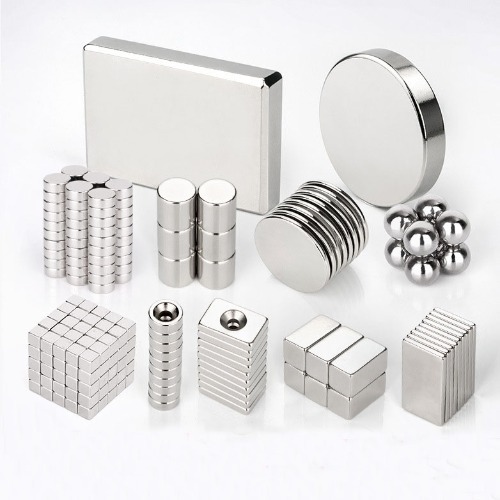
Neodymium magnets are the strongest magnets commercially available and due to their strength, even tiny neodymium magnets are effective, making them incredibly versatile. Since the creation of the first neodymium magnet, they have been used for many purposes.
Super-strength neodymium magnets are essential to many industries, including technology, medical research, electrical motor manufacturing, and renewable energy sources. Many of the advances made in the last 30 years would not have been possible without neodymium magnets.
Major Uses of Neodymium Magnets:
Electric motors rely upon a combination of an electromagnet and a permanent magnet, usually a neodymium magnet to convert electric energy into mechanical energy. A generator is reverse, it converts mechanical energy into electric energy by moving a conductor through a magnetic field.
Hard Disk Drives
A hard disk drive records data by magnetising and demagnetising a thin film of ferromagnetic material on a disk. Each disk is separated into many tracks and sectors and each sector has many tiny individual magnetic cells which are magnetised by thdrivees read/write head when data is written to the drive.
Hard drive heads are made from ceramic wrapped in a fine wire coil. When writing, the coil is energised, a strong magnetic field fors, and the recording surface adjacent to the gap is magnetised.
Strong magnets are also used in the actuator that moves the read/write head into position.
Audio Equipment such as microphones, acoustic pick-ups, headphones and loudspeakers
Permanent magnets are used in speakers alongside a current-carrying coil which converts electricity into mechanical energy that moves the speaker cone that in turn changes the pressure of the surrounding air creating sound.
Microphones work in reverse; a diaphragm is attached to a coil of wire which sits within a permanent magnet, when sound moves the diaphragm, the coil moves too. As the coil moves through the magnetic field created by the permanent magnet an electrical signal is produced which is characteristic of the original sound.
Reed Switches
A reed switch is a switch operated by a magnetic field. Reed switches consist of contacts placed on ferrous reeds, encased in a sealed glass tube. They can be designed to be open or closed by default in the absence of a magnetic field and are activated by bringing a neodymium magnet close to the switch.
A typical use for reed switches is detecting the opening and closing of doors in burglary alarm systems.
Magnetic Separators
Most processing facilities will use some form of magnetic separation system to remove contaminating ferrous and paramagnetic items from production or processing lines. This is usually done using a form of conveyor system and strong filter rod magnets.
Lifting Machinery
Permanent magnets are essential in the heavy engineering and manufacturing industries, used for lifting large ferrous items. Switchable release magnets using super-strong neodymium magnets are commonly used as they are supplied with a quick-release switching mechanism.
ABS (anti-lock braking) System Sensors
Passive ABS sensors use neodymium magnets wrapped inside copper coils. A sensor is placed close to the ABS reluctor ring and as the ring rotates a voltage is induced in the copper wire. This signal is monitored by the vehicle’s computer system and used to define wheel speed.
Point of Sale Displays
Every time you enter a shop or restaurant you might not realise that you are surrounded by neodymium magnets but they will be there. That’s because many point of sale display advertising signs and stands use small are held together using small but strong neodymium magnets or are suspended from steel ceilings using neodymium hook magnets.
MRI Scanners
MRI scanners produce a large magnetic field that aligns the protons in a human body in the direction of the magnetic field. Radiofrequency waves are then directed at the body producing detailed internal images. Many ‘open’ MRI machines used in hospitals use large neodymium magnets, they literally help save lives.